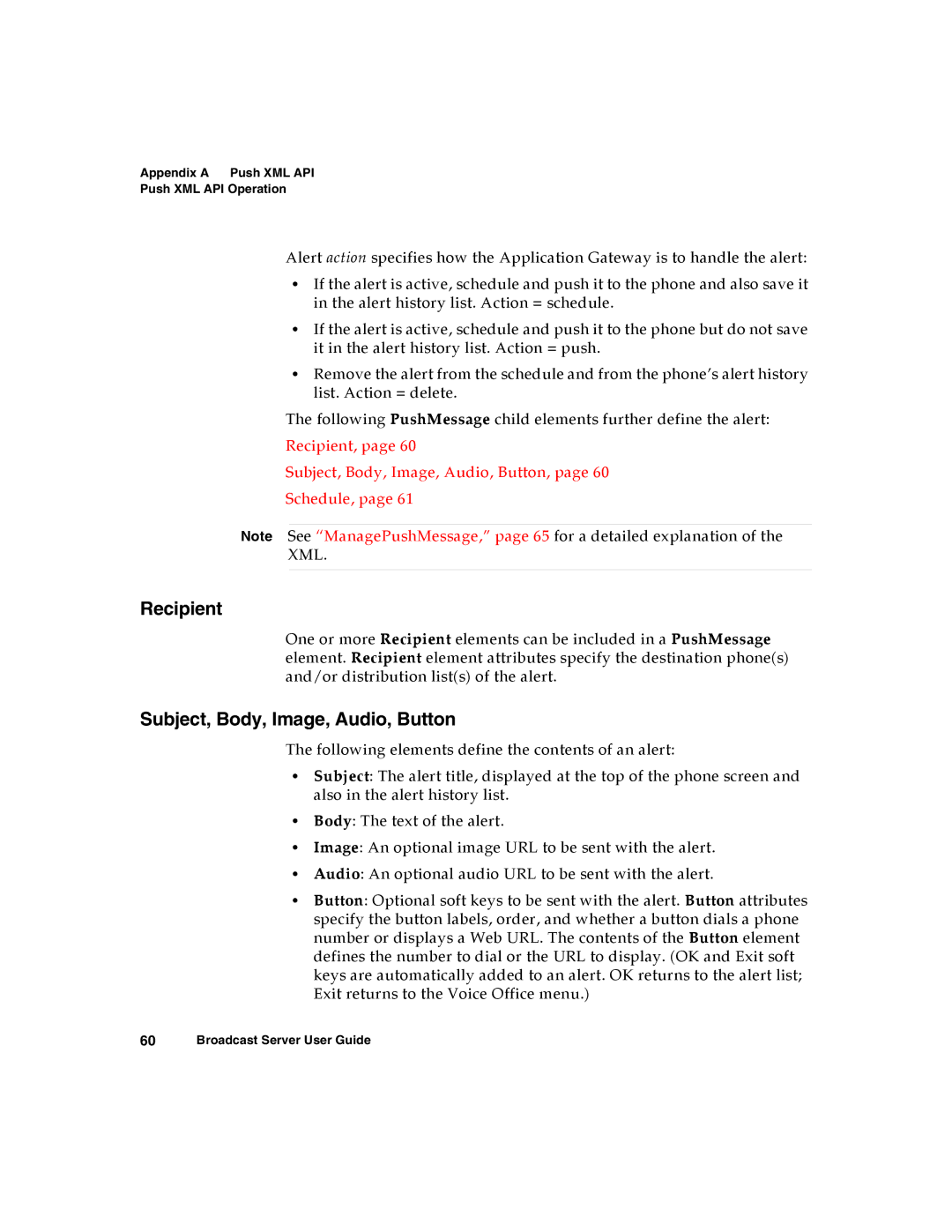Appendix A Push XML API
Push XML API Operation
Alert action specifies how the Application Gateway is to handle the alert:
•If the alert is active, schedule and push it to the phone and also save it in the alert history list. Action = schedule.
•If the alert is active, schedule and push it to the phone but do not save it in the alert history list. Action = push.
•Remove the alert from the schedule and from the phone’s alert history list. Action = delete.
The following PushMessage child elements further define the alert:
Recipient, page 60
Subject, Body, Image, Audio, Button, page 60
Schedule, page 61
Note See “ManagePushMessage,” page 65 for a detailed explanation of the XML.
Recipient
One or more Recipient elements can be included in a PushMessage element. Recipient element attributes specify the destination phone(s) and/or distribution list(s) of the alert.
Subject, Body, Image, Audio, Button
The following elements define the contents of an alert:
•Subject: The alert title, displayed at the top of the phone screen and also in the alert history list.
•Body: The text of the alert.
•Image: An optional image URL to be sent with the alert.
•Audio: An optional audio URL to be sent with the alert.
•Button: Optional soft keys to be sent with the alert. Button attributes specify the button labels, order, and whether a button dials a phone number or displays a Web URL. The contents of the Button element defines the number to dial or the URL to display. (OK and Exit soft keys are automatically added to an alert. OK returns to the alert list; Exit returns to the Voice Office menu.)
